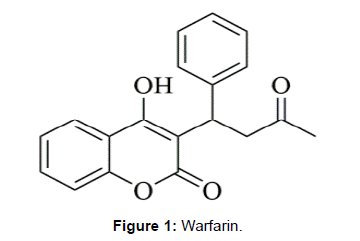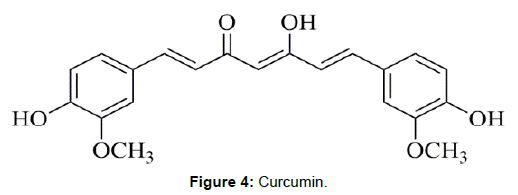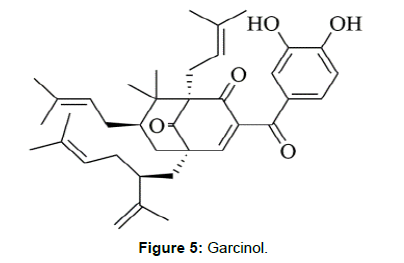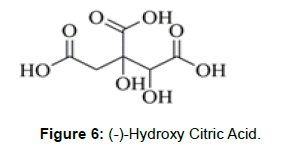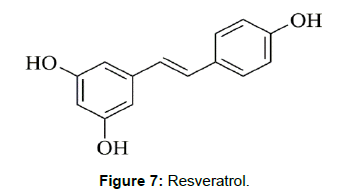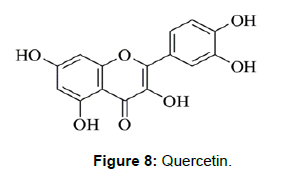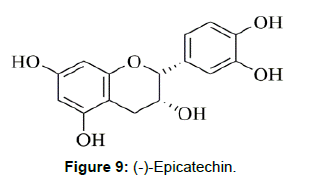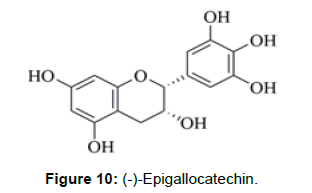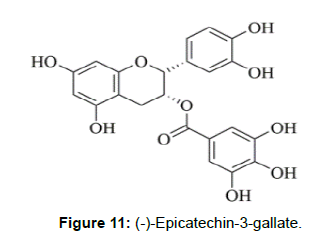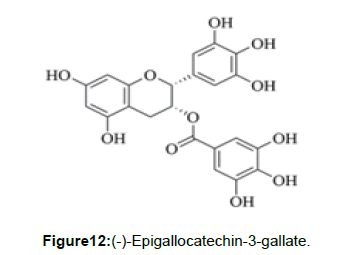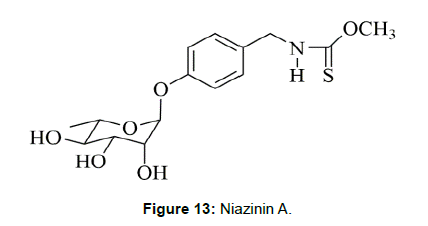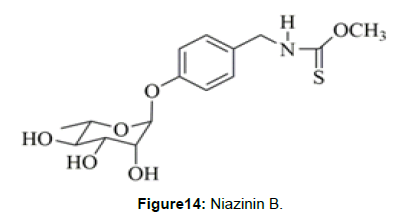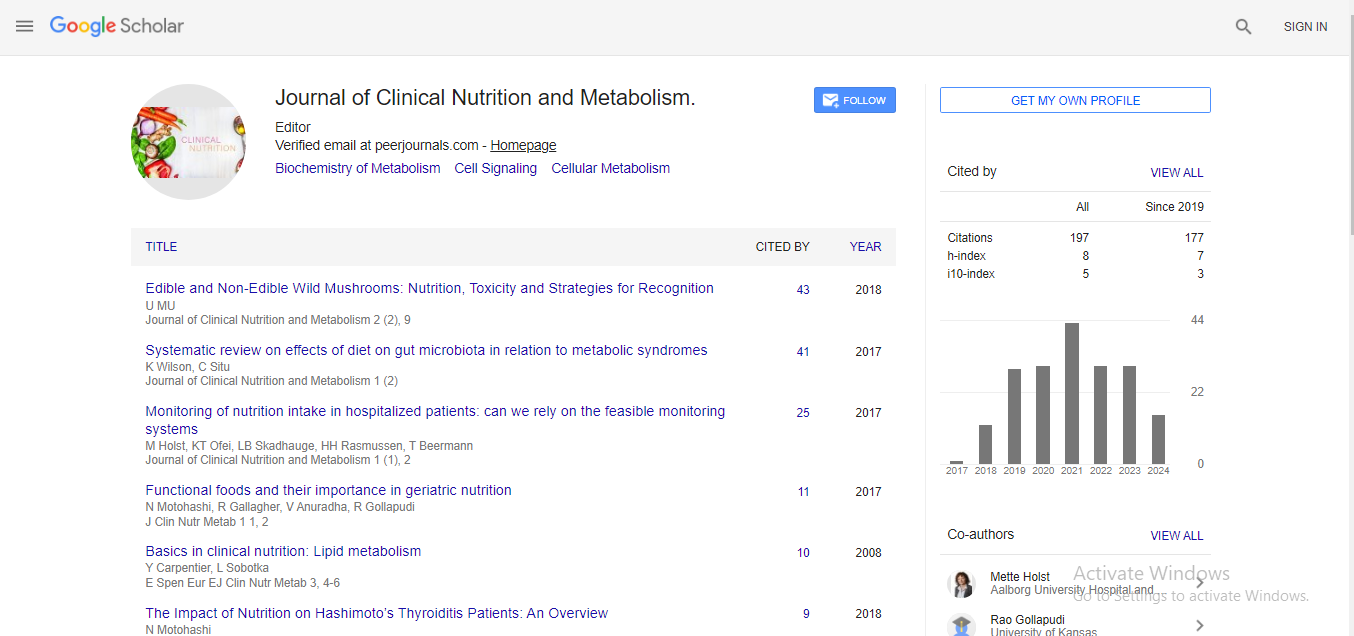Review Article, J Clin Nutr Metab Vol: 1 Issue: 1
Functional Foods and Their Importance in Geriatric Nutrition
Noboru Motohashi1, Robert Gallagher2, Vanam Anuradha3 and Rao Gollapudi2*
1Meiji Pharmaceutical University, Tokyo, Japan
2University of Kansas, Lawrence, KS 66045, USA
3Sri Venkateswara University, Tirupathi, AP, India
*Corresponding Author : Rao Gollapudi
University of Kansas, Lawrence, KS-66045, USA
Tel: (785)-393-4496
E-mail: gollapudirao@ku.edu
Received: September 05, 2017 Accepted: September 13, 2017 Published: September 20, 2017
Citation: Motohashi N, Gallagher R, Anuradha V, Gollapudi R (2017) Functional Foods and Their Importance in Geriatric Nutrition. J Clin Nutr Metab 1:1.
Abstract
Functional foods are extremely beneficial components found naturally in foods or added to the regular diet which include secondary metabolites, prebiotics, probiotics, synbiotics in addition to the usual vitamins, minerals and amino acids. Functional food ingredients contain biologically beneficial carotenoids, fatty acids, flavonoids, betalains, phenols, phenolic acids, phytosterols, alkaloids, phytoestrogens and dietary fibre. Some functional components of these foods play a major role in health improvement in the elderly. As health costs and average life expectancy increase, the elderly has searched cost effective ways to become healthier and develop high quality of life. The “Functional Foods” concept developed as a convenient solution to prevent/cure some of the chronic health problems. These foods help fight disease, boost immune system, energy, maintain healthy skin, maintain joints and strong bones, improve healthy digestion and promote longevity. Certain components in functional foods exhibit antioxidant, cardioprotective, antidiabetic, hepato and neuroprotective, antimicrobial activities and constipation improvement. Generally, consuming physiological levels of bioactive compounds is considered safe. However, excessive intake of bioactive components could be toxic since different amounts of bioactive compounds could react negatively in different situations. Hence, medical professional as well as nutritionist, practicing geriatric care should be well informed about functional food intake in the elderly, to avoid the allergies and synergic side effects with the prescription drugs.
Keywords: Geriatric care; Functional foods; Prebiotics; Probiotics; Synbiotics; Flavonoids; Phenols; Phytosterols
Introduction
The world population is growing older rapidly, while fertility rates are decreasing and people are living for longer periods. Globally, the population of 65 years old is estimated to be 1.6 billion. In US, 65 years and older population is estimated to be nearly double over the next three decades from 48 million to 88 million by 2050 [1]. Functional foods provide not only daily required nutrients but also other secondary metabolites with biological activities and physiological benefits to protect from infections and diseases. Nearly 2500 years ago, the familiar phrase “Let food be thy medicine and medicine be thy food” was coined by Hippocrates. The metabolic activity progressively decreases in elderly population of over 65 years. Hence, they should balance medication with healthy food habits and regular exercise to maintain good health and longevity. Selective functional foods help the elderly to cut down and/or eliminate the medicinal intake by improving their physiological functions. Many seniors are reluctant towards medicine intake and avoid medication accidentally or deliberately. In such cases, functional foods should become an integral part of daily diet [2]. However, this process should be administered under the combined supervision of qualified nutritionists and physicians. For example, a patient on warfarin (1), after consumption of goji juice developed symptoms of epistaxis, bruising and rectal bleeding which suggested the synergic effect of goji juice and warfarin (1) [3]. Therefore, qualified medical professional should acquire sufficient knowledge on functional foods and their constituents to foresee any synergic effect of functional foods with medication (Figure 1).
In addition, these foods provide nutrients and minerals that are essential to maintain normal body functions. The most common diseases that affect the elderly are cardiovascular, diabetes, cancer, dementia, Alzheimer’s and Parkinson’s diseases. The research on functional foods suggested that the secondary metabolites assist in slowing the progression or completely prevent some diseases onset [4]. The term “Functional Food” was first used in Japan in the 1980s. In later years, the Japanese government enacted a regulatory system where the functional foods were to be labelled as “Foods for Specified Health Use” (FOSHU) [5]. The present review presents some information on selective, not so familiar functional foods that play an important role in maintaining healthy life style among the elderly.
Since the first 50 years of the 20th century, scientific focus was on the isolation and identification of essential vitamins and their role in preventing various nutritional deficiencies and diseases. The dietary guidelines were aimed at public policy and education suggesting the importance of consuming a diet that was low in saturated fat, high in vegetables, fruits, whole grains and legumes to reduce the risk of chronic diseases such as cardiovascular, cancer, osteoporosis, diabetes and stroke [6,7]. Contemporarily, more research is focussed to identify physiologically active secondary metabolites in foods from both plants and animals that could potentially reduce the risk of a variety of chronic diseases.
Functional foods of animal origin
Investigations on the class of physiologically active components, -3 (n-3) fatty acids predominately found in fish resulted in the identification of two important fatty acids eicosapentaenoic acid (EPA) (2) and docosahexonic acid (DHA) (3). The DHA (3) is an essential component of the phospholipids of cellular membranes, mainly in human brain and retina and is essential for their proper functions. Nonetheless, further studies revealed that intake of -3 (n-3) fatty acids decreased mortality due to myocardial infraction in patients with coronary diseases [8,9]. The American Heart Association (AHA) Dietary Guidelines suggested 2-servings/week consumption of fatty fish like mackerel, sardine, albacore, tuna, herring, lake trout and salmon to maintain healthy heart [10] (Figures 2 and 3).
Worldwide, yoghurt is one of the most popular fermented milk products that provide multiple nutrients (protein, phosphorus, riboflavin, thiamine, vitamin B12, niacin, magnesium, zinc and valuable source of foliate) in significant amounts, in particular, calcium, in bioavailable form. Yoghurt exhibits multiple health benefits such as lactose tolerance, intestinal health, a possible role in body weight and weight loss. Lactobacillus delbrueckii, L. bulgaricus and Streptococcus thermophiles bacteria present in yoghurt supressed the types of putrefactive bacteria fermentations by the intestine flora thereby promoting intestinal health [11].
One category of biologically active animal-derived product which has gained a lot of interest recently is probiotics. The microorganisms in probiotics play a beneficial role in human health assisting intestinal function, immune function, stomach health, urogenital health, cholesterol lowering and hypertension [12,13]. Another category of non-digestible food ingredients are prebiotics that benefits the host by selectively stimulating the growth and activity of certain beneficial bacteria in the colon thereby improving host health. Prebiotics are short-chain carbohydrates like fructooligosaccharides and inulin which enter the colon serving as nutrients for the endogenous colon bacteria. The most recent concept is “synbiotics”, a mixture of probiotics and prebiotics (food containing both intestinal bacteria and indigestible dietary fibre). Synbiotics benefited the host by increasing the survival and implantation of live microbial dietary supplements in the gastrointestinal tract, stimulated the growth by activating the metabolism of certain health promoting bacteria [14].
Plant based functional foods
Turmeric (Curcuma longa): Turmeric (Curcuma longa), with low toxicity is extensively used as colouring and flavouring spice in the preparation of different cuisines around the world. The research has proven that most of the turmeric activities are attributed to the main constituent, curcumin (4) with antioxidant, antifungal, antimicrobial, anti-HIV, hepatoprotective and nephroprotective activities. Curcumin (4) was potential against cancer, diabetes, allergies, oedema and Alzheimer’s diseases including other chronic diseases. Besides, curcumin (4) reduced oxidative stress responsible for inducing cancer, diabetes, and inflammatory illnesses. In colon and prostate cancers, curcumin (4) inhibited cell proliferation and tumor growth and supressed the activity of several various mutagens and oncogenes. Turmeric exerted cardioprotective effect through antioxidant action by lowering lipid peroxidation and platelet aggregation. Its anti-inflammatory activity was related to its ability to inhibit the activities of cyclooxygenase 2 (COX2) and lipooxygenase. Turmeric inhibited carcinogenesis including angiogenesis [15]. Turmeric exhibited several protective effects on the gastrointestinal tract. In addition, turmeric decreased ulcer formation caused by stress, alcohol consumption and pyloric ligation; restored gastric wall mucus resulted from gastrointestinal abuses. It inhibited intestinal spasms and increased bicarbonate, gastrin, secretin and pancreatic enzyme secretions. [16] However, excessive consumption of turmeric could induce hepatotoxic effect [17] (Figure 4).
Goji berries (Lycium barbarium and L. chinense): Goji berry (Lycium barbarium and L. chinense), is an ellipsoide, orange-red in colour with a sweet and tangy flavour. Goji berry is an exceptional health food containing protein, fat, carbohydrates, omega-3s, omega- 6s, dietary fiber and high levels of antioxidants. Goji berry is a rich source of carotenoids, flavonoids, steroids, alkaloids, terpenoids and polysaccharides. Goji berry contains blood lipid-lowering, immunostimulatory, anticancer, retina cells protection, antioxidant, cardio vascular protection, anti-aging and antidiabetic properties. Some of these properties are attributed to secondary metabolites like alkaloids, calystegines, carotenoids, cerebrosides, cyclopeptides, glycerolipids, glycosides, lignoloids, phenols, polysaccharides, sterols, terpenes and withanolides [18,19]. Arabinogalactan proteins (AGPs) present in goji berry promoted digestive health, immunity, prevented bacteria and viruses from attaching to cell membranes on the liver and other organs thereby stopping infections and impairing tumor metastasis [20-22].
Kokum (Garcinia indica): Kokum (Garcinia indica), a dark purple colored fruit is a good source of antioxidants and phytochemicals useful in the prevention of chronic diseases – cardiovascular, diarrhea, asthma, dermatitis, piles, ulcers, cancer and diabetes. A major constituent in the rind, garcinol (5) exhibited anticarcinogenic, antioxidant, anti-inflammatory, anti-neurodegenerative, antianxiety, antimicrobial, DNA repair activities. Another important metabolite, (-)-hydroxy citric acid (6), acted as a good antiobesity agent thereby preventing many obesity related illnesses [23,24] (Figures 5 and 6).
Grapes (Vitis vinifera): The potential health benefits of grapes (Vitis vinifera) are prevention of heart disease, hypertension, constipation and cancer, giving them “Super Food” Status. Grapes contain polyphenols with antioxidant activity preventing many types of cancers. The resveratrol (7) in grape skin was essential for heart health and grape juice prevented platelet aggregation [25]. In addition, resveratrol (7) protected against diabetic neuropathy, retinopathy, Alzheimer’s disease, menopause symptoms and improved blood glucose control. The flavonoid, quercetin (8), a natural anti-inflammatory reduced the risk of atherosclerosis. Proanthocyanidins from grape seeds exerted an immune-modulatory effect in inflammatory conditions with an increased production of nitric oxide and prostaglandin. Furthermore, proanthocynadins exhibited high anti-inflammatory action by free radicle scavenging, prevented lipid peroxidation and inhibited formation of proinflammatory cytokines [26] (Figures 7 and 8).
Green Tea (Camellia sinensis): Green tea (Camellia sinensis) contains flavonoids, (-)-epicatechin, (9), (-)-epigallocatechin (10) (-)-epicatechin-3-gallate (11) and (-)-epigallocatechin-3- gallate (12). Of all, (-)-epigallocatachin gallate (12) was the most active, largest component (59%) and exhibited its effectiveness in maintaining cardiovascular and metabolic health. Fresh grape skin contained 50-100 micrograms (μg) of resveratrol. Furthermore, (-)-epigallocatachin gallate (12) interacted with specific proteins, antiangiogenesis mechanisms, targeted for inhibition of enzyme activities and signaling pathways, induction of cell cycle arrest and apoptosis. (-)-Epigallocatachin gallate (12) intake inhibited inflammation by regulating neutrophil function and suppressed granulocytemacrophage colony-stimulating factor. (-)-Epigallocatachin gallate (12) regular consumption decreased tooth loss, prevented the development and progression of periodontitis, dental caries and gingivitis. The green tea catechins increased antioxidant levels and decreased inflammatory elements levels. Besides, (-)-Epigallocatachin gallate (12) inhibited platelet activation by adensine diphosphate stimulation and suppressed p38 MAPK phosphorylation of heat shock protein 27 which would inhibit the release of prothrombotic elements from platelets. In addition, catechins lowered total cholesterol, LDLs, blood pressure and prevented LDL oxidation [27-29] (Figures 9-12).
Drumsticks (Moringa oliefera): Drumstick plant (Moringa oliefera) edible fruits and leaves have both nutritional and multimedicinal activities. Some of the medicinal effects are antimicrobial, antifungal, antihypertensive, antipyretic, anti- cancer, anti-inflammatory, antihyperglycemic and water purification [30]. In hyperglycemic patients beta cells get destroyed and high glucose enters the mitochondria and releases reactive oxygen species. Beta cells contain less antioxidant and hence result in the apoptosis of beta cells. This in turn reduces insulin secretion which leads to hyperglysemia and diabetes. The flavonoids like quercetin (7) in drumstick seed showed radicle scavenging activity, protected the beta cells and kept hyperglycemia under control [31]. Moringa oliefera leaf juice displayed a stabilizing effect on blood pressure. Two thiocarbomate glycoside, niazinin A (13) and niazinin B (14) - present in the leaf were responsible in lowering the blood pressure [32] (Figures 13 and 14).
Foods like oats, soy and Psyllium husk are rich in fibre, low in saturated fat, cholesterol and reduce the risk of cardiovascular diseases. Furthermore, foods containing at least 0.65 grams of phytosterols consumed twice a day with meal might reduce the risk of heart disease. These health claims were approved by Food and Drug Administration (FDA) [33].
Usually, a regular diet abundant in fruits and vegetables improves overall health in the elderly. Both fresh and frozen fruits and vegetables provide necessary vitamins, fibre, minerals and antioxidants that are protective against multiple chronic diseases ranging from constipation, cardiovascular diseases, diabetes, Alzheimer’s disease, obesity and cancer in the elderly [34]. In addition, periodic consumption of functional foods could improve health among the elderly due to the presence of unusual secondary metabolites like flavonoids, isothiocyanates, phenolic acids, terpenoids and sterols with proven biological activities.
Conclusion
Functional foods are considered to be beneficial for better health and well-being, whereas fortified or enhanced foods provide a health benefit beyond the traditional nutrients. Functional foods provide optimal digestive health and boost some specific claims supported by scientific research for the elderly. Incorporating these foods in daily diet provides multiple health benefits. Functional foods, in combination with other healthy habits and life style, help maintaining good immune response, digestive health, locomotion, cardiovascular function, and general wellbeing in the elderly. Some functional foods cause food allergies and in such cases the allergy causing foods should be avoided. Furthermore, the functional food interactions with other dietary components and potential adverse interactions with pharmaceutical drugs must be clearly understood and evaluated. Functional foods are neither a panacea for poor health habits nor a “miracle bullet”. In addition to proper diet, the elderly should include regular exercise, stress reduction, tobacco avoidance, healthy body weight and positive health practices to maximize health and reduce diseases risk.
References
- He W, Goodkind D, Kowal P (2016) An aging world (2015) International Population Reports. United States Census Bureau, US Department of Health and Human Services, National Institute of Health, Washington, DC, USA.
- Institute of Food Technologists, Expert Report (2005) Functional foods: opportunities and challenge.
- Rivera CA, Ferro CL, Bursua AJ, Gerber BS (2012) Probable interaction between Lycium barbarum (goji) and warfarin. Pharmacotherapy 32: e50-e53.
- US Department of Agricultural Research Services (2010) Basics about functional foods Washington. DC, USA.
- Ministry of Health, Labour and Welfare, Japan (1999) Food for Special Dietary Uses Government of Japan. Food for Special Dietary Uses (FOSDU).
- Selected Committee on Nutrition and Human Needs (1977) Dietary Goals for the United States U.S. Government Printing Office, Washington, DC, USA.
- United States, Department of Agriculture, Department of Health and Human Services (1990) Nutrition and your health: Dietary Guidelines for Americans. US Department of Agriculture, Washington, DC, USA.
- Bucher HC, Hengstler P, Schindaler C, Meiter G (2002) N-3 PUFA in coronary heart disease: a meta-analysis of randomized controlled trails. Am J Med 112: 298-304.
- Rice R (1999) Focus On omega-3. Ingred Health Nutr 2: 11-15.
- Papanikolaou Y, Brooks J, Reider C, Fulgoni VL (2014) Correction: US Adults are not meeting recommended levels for fish and omega-3 acid intake: results of an analysis using observational data from NHANES 2003-2008. Nutr J 13: 64-66.
- Mckinley, MC (2005) The nutrition and health benefits of yoghurt. Int J Diary Technol 58: 1-12.
- Salminen S, Bouley C, Boutron-Ruault MC, Cummings JH, Franck A, et al. (1998) Functional food science and gastrointestinal physiology and function. Br J Nutr 80: S147-171.
- Sanders ME (1999) Probiotics. Food Technol 53: 67-77.
- Gibson GR, Roberfroid MB (1995) Dietary modulation of the human colonic microbota: introducing the concept of prebiotics. J Nutr 125: 1401-1412.
- Rao CV, Rivenson A, Simi B, Reddy BS (1995) Chemoprevention of colon carcinogenesis by dietary curcumin, a naturally occurring plant phenolic compound. Cancer Res 55: 259-66.
- Khajedehi P (2012) Turmuric: reemerging of a neglected Asian traditional remedy. J Nephropathol 1: 17-22.
- Kanbarkar SV, Sawant SS, Ingle AD, Deshpande SS, Maru GB (1998) Subchronic oral hepatotoxicity of turmeric in mice-histopathological and ultrastructural studies. Indian J Exp Biol 36: 675-679.
- Gollapudi R, Motohashi N (2015) The health benefits of goji berries (Lycium barbarum, L. chinense). Occurrence, biosynthesis, and health benefits on their evidences of medicinal, phytochemicals in vegetables and fruits. Nova Publications, New York, USA.
- Kulczynski B, Gramza-Michalowska A (2016) Goji berry (Lycium barbarum): composition and health effects- a review. Polish J Food Nutr Sci 66: 67-75.
- D’Adamo P, Larch (1996) Larch Arabinogalactan is a novel immune modulator. J Naturopath Med 4: 32-39.
- Hagmar B, Ryd W, Skomedal H (1991) Arabinogalactan blockade of experimental metastases to liver by murine hepatome. Invasion Metastasis 11: 348-355.
- Beuth J, Ko HL, Oette K, Pulverer G, Roszkowski K, et al. (1987) Inhibition of liver metastasis in mice blocking hepatocyte lectins with arabinogalactan infusions and D-galactose. J Cancer Res Clin Oncol 113: 51-55.
- Gollapudi R, Basha SG, Motohashi N (2016) Medicinal phytochemicals and health effects of kokum Garcinia indica based on their evidences. Occurrence, biosynthesis, and health benefits on their evidences of medicinal, phytochemicals in vegetables and fruits. Nova Publications, New York, USA.
- Swami SB, Thakor NJ, Patil SC (2014) Kokum (Garcinia indica) and its many functional components as related to the human health: a review. J Food Res Technol 2: 130-142.
- Freedman JE, Parker C, Li L, Perlman JA, Frei B, et al. (2001) Select flavonoids and whole juice from purple grapes inhibit platelet function and enhance nitric oxide release. Circulation 103: 2792-2798.
- Georgiev V, Ananga A, Tsolova V (2014) Recent advances and uses of grape flavonoids as nutraceuticals. Nutrients 6: 391-415.
- Wolfram S (2007) Effects of green tea and EGCG on cardiovascular and metabolic health. J Am Coll Nutr 26: 373-388.
- Reygaert WC (2017) An update on the health benefits of green tea. Beverages 3: 6.
- Mitscher LA, Dolby V (1997) The green tea book: China’s fountain of youth. Avery, New York, USA.
- Toma A, Deyno S (2014) Phytochemistry and Pharmacological Activities of Moringa oleifera. Int J Pharmacognosy (IJP) 1: 222-231.
- Gopalakrishnan L, Doriya K, Kumar DS (2016) Moringa oleifera: A review on nutritive importance and its medicinal applications. Food Sci Human Wellness 5: 49-56.
- Faiza S, Siddiqui BS, Saleem R, Siddiqui S, Aftab K, et al. (1994) Novel hypotensive agents, niazimin A, niazimin B, niazicin A and niazicin B from Moringa oleifera; isolation of first naturally occurring carbamates. J Chem Soc Perkin Trans I 20: 3035-3640.
- Hasler CM (2002) Functional foods: benefits, concerns and challenges-A position paper from the American Council on Science Health. J Nutr 132: 3772-3781.
- Pem D, Jeewon R (2015) Fruit and vegetable intake: benefits and progress of nutrition education interventions-narrative review article] functional food. Iran J Public Health 44: 1309-1321.
 Spanish
Spanish  Chinese
Chinese  Russian
Russian  German
German  French
French  Japanese
Japanese  Portuguese
Portuguese  Hindi
Hindi 